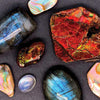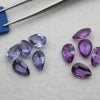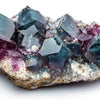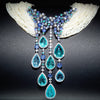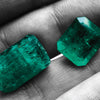Phenomenal Gemstones: Light, Magic, and the Wonders of Nature
- by Greta Fontanella

Not all gemstones are admired just for their color or clarity — some possess optical phenomena that turn them into miniature light shows. Known as phenomenal gemstones, these rare and enchanting stones interact with light in extraordinary ways, creating visual effects like shimmering stars, glowing lines, and spectral flashes.
From the mysterious glow of moonstone to the fiery dance of opal, phenomenal gemstones are a reminder that nature is the greatest magician of all.
What Is a Phenomenal Gemstone?
A phenomenal gemstone exhibits a visible optical effect caused by the interaction of light with the gem’s internal structure. Unlike simple transparency or brilliance, these effects are the result of inclusions, growth patterns, or crystal structures that scatter, reflect, or diffract light in unique ways.
These effects may include:
-
A star or eye that appears to float across the surface
-
A soft, ethereal glow
-
Bright, shifting color flashes
-
Dramatic spectral shifts when viewed from different angles
They are not flaws — but features — making each stone mystical, rare, and visually captivating.
Types of Phenomenal Gemstones and Their Optical Effects
Let’s explore the key types of optical phenomena in gemstones and the stones that exhibit them.
1. Asterism (Star Effect)
Appearance: A floating, glowing star on the surface of the stone
Most Famous Stones:
-
Star sapphire
-
Star ruby
-
Star garnet
-
Rose quartz (rare)
Cause: Asterism is caused by needle-like inclusions, typically rutile, aligned in such a way that light reflects along them in intersecting directions. When cut en cabochon (dome-shaped), the stone reflects a four-, six-, or twelve-rayed star.
Tip: The star should be sharp, centered, and move smoothly across the surface as the light source or the gem is moved.
Rarity: ⭐⭐⭐⭐
Use: Statement rings, pendants

2. Chatoyancy (Cat’s Eye Effect)
Appearance: A single bright band of light moving across the surface, like a cat’s eye
Most Famous Stones:
-
Chrysoberyl cat’s eye (the most valuable)
-
Tourmaline
-
Quartz (tiger’s eye)
-
Apatite, beryl, and others
Cause: Fine, parallel inclusions reflect light in a narrow band across the stone. When rotated, the line appears to glide across the surface.
Tip: True chrysoberyl cat’s eyes are often called “Cymophane”, and fetch very high prices when the line is sharp and the background is rich and silky.
Rarity: ⭐⭐⭐⭐
Use: Men’s rings, traditional talismans, elegant one-of-a-kind pieces

3. Adularescence
Appearance: A soft, glowing light that seems to float just below the surface of the stone
Most Famous Stone:
-
Moonstone (especially high-quality rainbow moonstone)
Cause: Adularescence is caused by the scattering of light between thin, alternating layers of orthoclase and albite feldspar. This creates a hazy, glowing effect — usually blue or white — that dances across the surface.
Tip: Look for high transparency and a strong blue sheen that moves with the light.
Rarity: ⭐⭐⭐ (for high-quality)
Use: Ethereal jewelry, bohemian and romantic styles

4. Labradorescence
Appearance: A vibrant, colorful play of light in flashes of blue, green, yellow, or even purple
Most Famous Stone:
-
Labradorite
Cause: Labradorescence is created by light diffraction within microscopic layers inside the feldspar mineral. Unlike opal’s random color play, this effect appears in angular, shifting flashes.
Tip: The highest quality labradorite comes from Finland (Spectrolite) and can show full-spectrum iridescence.

Rarity: ⭐⭐⭐
Use: Statement pendants, artisan rings, spiritual or mystical jewelry
5. Play-of-Color (Opalescence)
Appearance: A dazzling display of rainbow flashes that change as the stone moves
Most Famous Stone:
-
Precious opal
Cause: Play-of-color is the result of light diffraction through silica spheres in opal’s structure. The spheres act like a prism, scattering light into brilliant flashes of color that change with angle and lighting.
Types of Opal:
-
White opal – milky base with pastel flashes
-
Black opal – dark base with vivid color play
-
Boulder opal – thin seams of opal in matrix rock
-
Crystal opal – transparent or translucent with internal fire
Tip: Look for opals with broad, multi-colored flashes and high brightness. Avoid dull or static stones.
Rarity: ⭐⭐⭐⭐⭐ (for black and crystal opals)
Use: Collector-grade rings, pendants, earrings

6. Tenebrescence (Reversible Color Change)
Appearance: The stone darkens or changes color in sunlight or UV, and returns to original in the dark
Most Famous Stone:
-
Hackmanite (variety of sodalite)
Cause: UV light triggers a reversible alteration in atomic structure, allowing the stone to absorb and release electrons — creating a visible shift in hue (often white-to-pink or lavender-to-violet).
Tip: Hackmanite can be fun and interactive — keep one near a sunny window to see the change in real time.
Rarity: ⭐⭐
Use: Collector pieces, educational and novelty jewelry
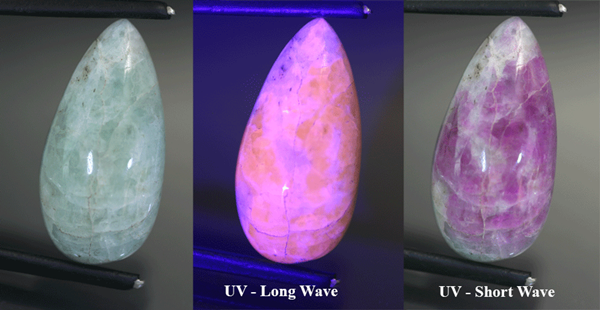
Jewelry Design Tips for Phenomenal Stones
Because these stones are light-dependent, their effect changes constantly — making them a conversation piece in any design.
Here’s how to make the most of them:
-
Use curved surfaces (cabochon cuts) for star and cat’s eye stones
-
Maximize light exposure in open-backed or raised settings
-
Pair with simple metals to avoid distraction from the optical effect
-
Avoid ultrasonics and heat treatments, especially for opals and moonstones
Caution: Many phenomenal gems are softer (especially opals and moonstones), so be mindful when choosing ring settings.
Symbolism and Cultural Significance
Phenomenal gems have long been associated with magic, spirituality, and transformation. Across cultures, they’ve been believed to:
-
Protect against the evil eye (cat’s eye)
-
Enhance intuition and dreams (moonstone, labradorite)
-
Bring luck or insight (star sapphire)
-
Connect to celestial forces (opals and adularescent stones)
In modern jewelry, they represent mystery, individuality, and inner beauty — a celebration of uniqueness in every wearer.
Summary Table
| Phenomenon | Gemstone(s) | Effect | Hardness | Rarity |
|---|---|---|---|---|
| Asterism | Star sapphire, ruby | Star pattern | 9 | ⭐⭐⭐⭐ |
| Chatoyancy | Chrysoberyl, quartz | Cat’s eye band | 8.5 | ⭐⭐⭐⭐ |
| Adularescence | Moonstone | Soft glow | 6–6.5 | ⭐⭐⭐ |
| Labradorescence | Labradorite | Iridescent flashes | 6–6.5 | ⭐⭐⭐ |
| Play-of-Color | Opal | Rainbow fire | 5.5–6.5 | ⭐⭐⭐⭐⭐ |
| Tenebrescence | Hackmanite | Reversible color change | 5.5–6 | ⭐⭐ |
- Posted in:
- adularescence
- asterism
- cat's eye gem
- feldspar jewelry
- gemstone optical effects
- hackmanite
- labradorescence
- light effects in gemstones
- magical gemstones
- moonstone
- moonstone glow
- mystical gemstones
- opal fire
- phenomenal gemstones
- play-of-color
- rare gem phenomena
- star sapphire

